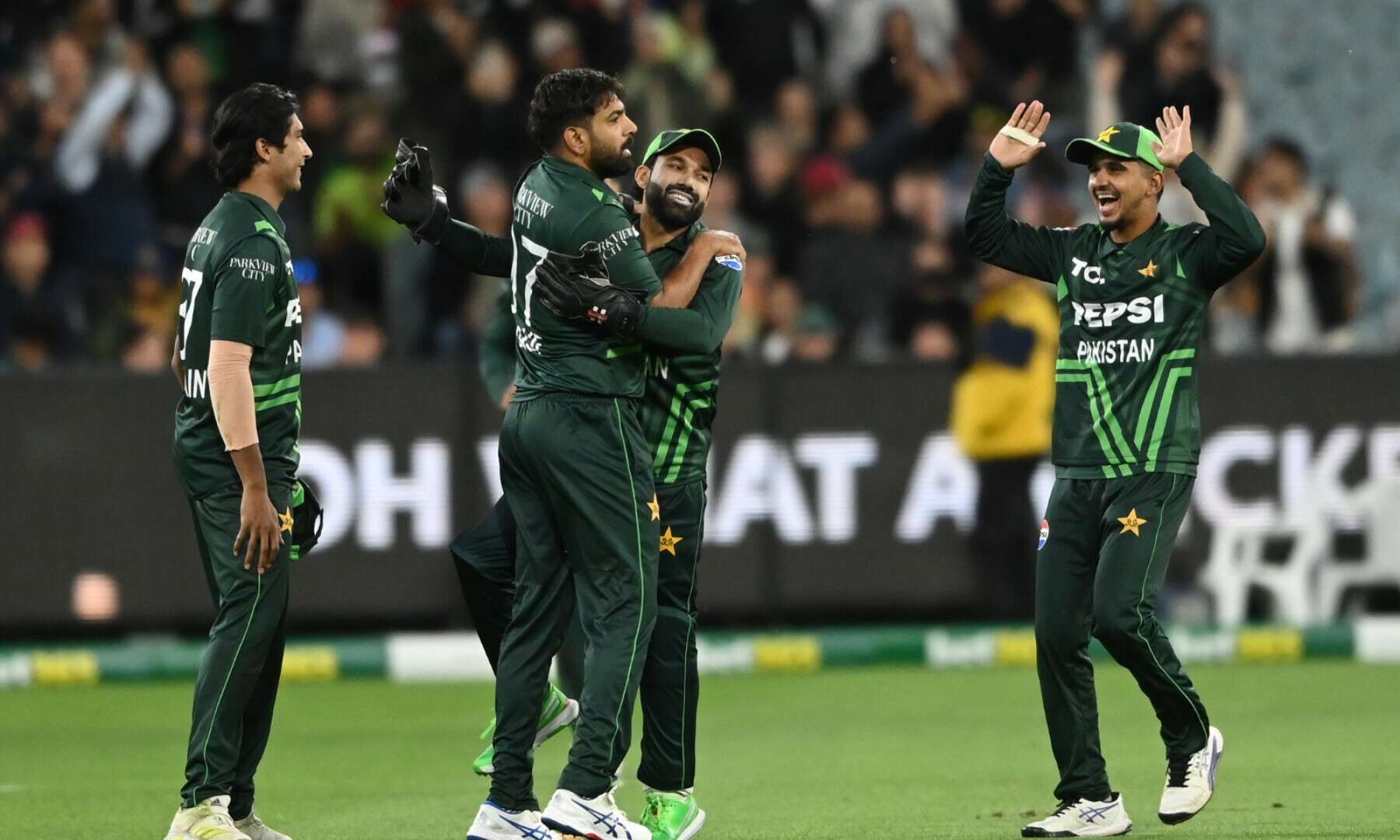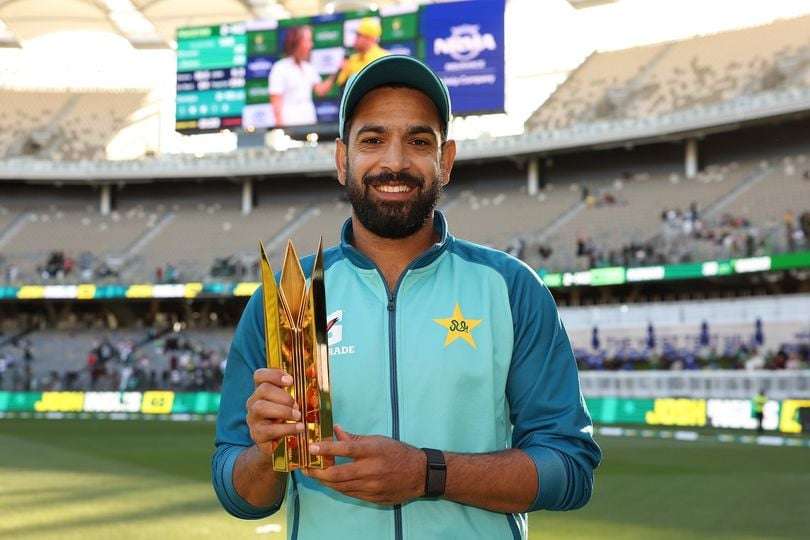After a narrow loss in the first ODI, Pakistan now faces the challenge of leveling the series against Australia in the second ODI, set to take place in Adelaide. With much at stake, both teams are expected to bring their best to the field. As Pakistan hopes to recover from their defeat, there are several crucial points to consider ahead of this match.
In this article, we break down the five most significant talking points ahead of the upcoming clash between Pakistan and Australia.
1. Batting Woes: A Persistent Challenge for Pakistan in Australia
A consistent issue for Pakistan in Australian conditions is their batting fragility.
In the series opener, Pakistan struggled to put up a substantial total, managing only 203 runs and falling short of their allotted 50 overs. This batting failure has become a recurring problem for the team whenever they tour Australia, where the conditions are often hostile for subcontinental teams, especially in the shorter formats.
The loss has been attributed to bad luck by captain Mohammad Rizwan, but the reality is that the team’s batting failures were the key reason behind the defeat. Against a formidable side like Australia, Pakistan needs to show better resilience at the crease.
Key Batting Issues:
- Lack of big partnerships.
- Inconsistent shot selection.
- Struggles against pace and spin.
As the team prepares for the second ODI, Pakistan’s batters must step up to the challenge. The likes of Babar Azam, Fakhar Zaman, and Imam-ul-Haq, who have shown flashes of brilliance, need to convert their starts into substantial scores to give Pakistan a fighting chance.
2. Is Babar Azam Back to His Best?
Babar Azam’s form has often been a topic of debate, and his performance in the first ODI raises both concerns and hopes.
While many consider Babar to be one of the best in the world, his recent ODI performances have been mixed. He scored 37 runs in the opening game, which was a reasonable knock, but given his standards, it didn’t feel like a match-winning contribution.
Despite this, it’s important to recognize that Babar’s consistency is rarely in doubt. His recent stats — 74, 50, 9, 66 not out, 38, and 37 — suggest that he is not out of form, but rather going through a slight dip that many top-order batsmen face.
Why Babar’s Knock Could Be a Turning Point:
- He hit four boundaries, showcasing his signature stroke play.
- His dismissal to spin, despite the pitch being suited for pace, was a moment of concern but can be addressed with better adaptability on different surfaces.
What to Expect in Adelaide: Adelaide’s wicket is generally more favorable to batting compared to the quick, bouncy tracks of Melbourne. With a bit more comfort on offer, Babar could very well be set for a larger score, and Pakistan fans will be hoping that this match could see him back to his best.
3. Naseem Shah: The Bright Spark Amidst Concerns
Naseem Shah has emerged as a standout performer for Pakistan, and his efforts in the first ODI were vital for the team’s competitive total.
Despite Pakistan’s defeat, Naseem provided hope, first with the bat, where he contributed a quick-fire 40 runs off just 39 balls. He hit four sixes, showcasing his aggressive style, which was crucial in reviving Pakistan’s innings. His ability to counterattack in tough situations is invaluable, and he proved that with his performance.
However, his fitness remains a concern. Naseem has been prone to injuries, and his ability to maintain peak fitness through a grueling tour is something Pakistan will need to monitor. Fortunately, there are reports indicating that he has regained full fitness and will feature in the second ODI.
Naseem Shah’s Key Strengths:
- A genuine fast bowler with raw pace.
- A handy lower-order batter capable of shifting the momentum.
Fitness Concerns:
- Despite his talent, Naseem has struggled with maintaining fitness throughout a long series. A fit Naseem will be key to Pakistan’s chances in the second ODI.
4. Pakistan’s Bowling Strategy: Adapting to Adelaide’s Conditions
Pakistan’s bowlers were brilliant in the first ODI, but the second ODI in Adelaide presents a very different challenge.
At the Melbourne Cricket Ground (MCG), the bowlers had the advantage of a quick wicket that helped them rush the Australian batters into making mistakes. Haris Rauf and Naseem Shah caused plenty of problems in the opening match, keeping the pressure on the Aussies.
However, Adelaide Oval offers a different challenge. The wicket here is typically more batsman-friendly, with the ball coming onto the bat nicely, and the boundaries are shorter compared to MCG. This means that Pakistan’s seamers need to adjust their lengths and strategies accordingly.
Key Adjustments for Pakistan’s Bowlers:
- Avoiding over-pitching as Adelaide’s wicket is not as conducive to bounce.
- Emphasizing variations in pace and ensuring accuracy to contain runs.
- The bowlers should focus on building pressure with tight lines and working as a unit.
Pakistan’s bowling strategy must evolve to counter the conditions of Adelaide if they are to stand a chance of restricting the Australian batters.
5. Will Pakistan’s Consistency Hold Up?
Pakistan is known for following patterns in their cricketing campaigns, and how they respond after a narrow defeat in the first ODI will determine their trajectory in this series.
Pakistan has two main patterns:
- The Slow Start, Strong Finish: Often, they begin with slow performances in the early stages of a series but manage to pick up momentum as they move forward, especially in multi-team tournaments.
- The Positive Start, Sudden Collapse: On the flip side, Pakistan sometimes starts strong but falters unexpectedly, losing the plot in later stages.
Having started the tour with a narrow defeat and positive signs in the first ODI, the real question is whether Pakistan can build on their positives and avoid falling into their usual pattern of inconsistency.
What to Expect from Pakistan in the Second ODI:
- If they can capitalize on the lessons from the first match, they may level the series with a more complete team performance.
- A focus on improving batting depth and resilience will be essential to avoid another collapse.
FAQs:
1. What are the key factors for Pakistan to win the second ODI?
- Pakistan must improve their batting performance, adapt to Adelaide’s conditions, and continue to rely on their bowlers, especially Naseem Shah and Haris Rauf, for breakthroughs.
2. Is Babar Azam out of form?
- Babar’s recent performances have been solid, with the occasional failure. His 37 runs in the first ODI suggest that he’s in reasonable form, and Adelaide could see a return to his best.
3. What are the key challenges for Pakistan’s bowlers in Adelaide?
- Adelaide offers a more batsman-friendly wicket, with shorter boundaries. Pakistan’s bowlers need to adjust their length and work on variations to prevent easy runs.
4. How important is Naseem Shah’s fitness for Pakistan’s chances?
- Naseem Shah’s fitness is crucial, especially in a long series. If he can maintain peak fitness, his pace and lower-order hitting make him a key player for Pakistan.
5. Can Pakistan bounce back after their defeat in the first ODI?
- Pakistan has the potential to bounce back, but they must address their batting issues and build on the positives from the first match, particularly in the bowling department.
ALSO READ:



